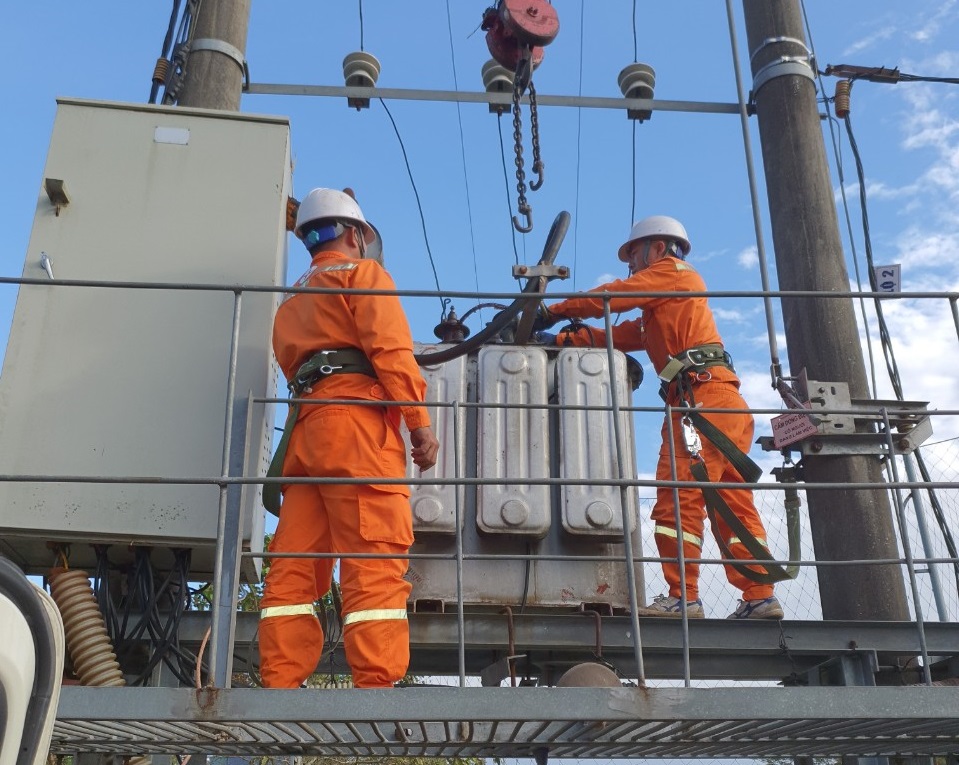
Vietnam's electricity consumption reached 1 billion kWh. (Photo: EVN)
The power shortage crisis in northern Vietnam last year is still vivid. With the expectation of electricity demand surge, Vietnam Electricity (EVN) has implemented various measures to manage power distribution and alleviate the pressure on supply.
While summer is approaching, electricity consumption across the country has hit record highs one after another, even have not yet reached the peak season, the total electricity consumption reached 1 billion kWh on May 28, and concerns about power shortages have resurfaced. Reuters reported the other day that local power companies had asked large FDI enterprises in the northern region, such as Foxconn, to reduce electricity consumption by 30%. EVN the next day quickly denied these claims and highlighted the impressive results of the Demand Response (DR) of companies to dispel the rumors.
Why is Vietnam facing power shortages? What are foreign businesses worried about? Reccessary analyzes the reasons behind Vietnam's power supply shortage and the current countermeasures of government.
EVN encourages "Demand Response" (DR) to reduce peak-time electricity usage
Since the annual Vietnam Business Forum (VBF) in March, many business associations such as Kocham, JCCI, and AmCham have expressed concerns to the Vietnamese government about how electricity shortages are disrupting production planning. Vietnamese Prime Minister Pham Minh Chinh has pledged to prevent power shortages this year. He has required EVN to ensure that similar incidents do not recur and make voluntary power saving into a new slogan.
EVN encourages enterprises to coordinate with "Demand Response" management measures. This approach involves the electricity company offering various incentives or additional services to lure electricity users to adjust their consumption habits, reduce electricity usage in peak time, or shift it to off-peak periods.
According to EVN, over 11,000 companies have joined the program, with 1,579 companies in the southern region, which has not faced power shortages yet. EVN claimed that adjusting production schedules has helped companies reduce their total electricity consumption by 25-30%, and since the electricity price differential between peak and off-peak, they have saved nearly 15% on electricity bills.
Three major reasons explain why Vietnam has a power shortage
The power shortage in Vietnam last year was primarily due to extreme weather, but it also highlighted the vulnerability of the country's power grid. Vietnam's slow in power sources development; limited capacity of the transmission grid and various reasons have led to concerns about power shortages.
Firstly, Vietnam's electricity supply falls short of demand. EVN estimates that the electricity demand growth will be around 9% this year, but it has already increased to 13% in recent months, with peak demand in the north growing by 17%. Overall, as of May 19, the total power load has increased by about 11.4% compared to the same period in 2023, with the northern region growing by 11.5%, the central region by 9.6%, and the southern region by 11.7%.
Secondly, the development of traditional and renewable energy projects has been sluggish. According to the Vietnam Energy Association, by 2030, the northern region can only add up to 3,160 MW of coal power, far below the 10,800 MW outlined in the National Power Development Plan (PDP8). Several coal power projects exceeding 1,000 MW in the central and southern regions have been delayed, suspended for lack of funding, or have been required to switch to new energy sources, or have even been canceled by developers. For instance, Vietnam has significant wind power potential and has caught the interest of major international companies that are conducting site assessments. Despite this, there have been no tangible results yet, leading to Orsted even announcing its withdrawal from the Vietnamese wind power market to concentrate on other ventures.
In addition, there is a limitation of power dispatching across regions due to the narrow and elongated geography of Vietnam, particularly the difficulty in transmitting power from the southern to the central and central to the north regions. The experts have discussed privatizing the distribution grid, but no concrete policies and pricing for distribution services have been established yet.
Furthermore, Vietnam faces a dilemma in power source development. While actively developing renewable and new energy sources, frequent policy changes have resulted in many projects being unable to register and operate in a timely manner, causing them to miss out on feed-in tariff (FIT) incentives. As a result, there are still dozens of renewable energy projects that have not been able to connect to the grid due to developers' inability to reach a win-win wholesale price with EVN.
.jpg)
Self-consumption rooftop solar power has been included in the measures to address this year's power shortages. (Photo: EVN)
What measures did the Vietnamese government take?
Vietnamese Ministry of Industry and Trade (MOIT) has required relevant departments to ensure stable power supply in the second half of this year by:
- Ensuring the availability of coal and natural gas for power plants by committing to produce or import.
- Appropriately arranging maintenance and inspection of the equipment, and address generator failures promptly to ensure maximum generation capacity.
- Accelerating the development of key power and transmission grid projects, and maximizing the dispatch of existing renewable energy sources.
- MOIT will update and submit regulatory framework for new energy development, self-consumption rooftop solar power development and utilization, direct power purchase agreements (DPPA), offshore wind power, natural gas power development, and power purchase from Laos.
- Adding more initiatives of energy efficiency and reduce power consumption.
In the long term, implementing PDP8, developing a competitive power market, and revising and issuing various types of power pricing policies are essential to resolving the power shortage crisis. Prime Minister Pham Minh Chinh stated, "will try our best to dispatch and utilize existing energy sources, even importing power in emergency situations."
With less than a month until the peak heat, EVN has stated that, they will ensure a smooth transition through electricity supply challenges and provide a stable power supply this year if extreme hot weather does not reoccur.
Sources: EVN, ERAV, VnExpress, Diendandoanhnghiep.vn



